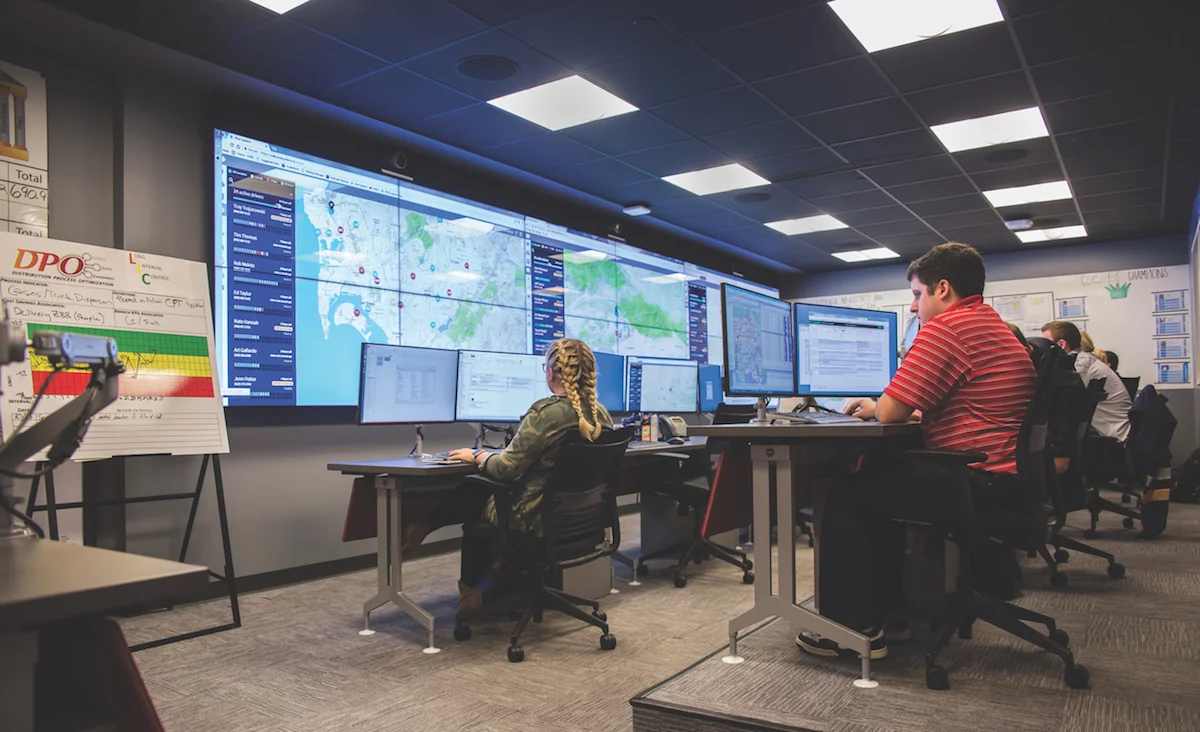With meat-processing workers falling victim to the coronavirus, shuttering plants and slowing supply, Americans are starting to see poorly stocked aisles where once beef and pork were plentiful. At the same time, the link between industrial meat production and deadly human viruses has become more widely understood.
Read MoreHousebound Americans looking to avoid supermarket anxiety have been bombarding FreshDirect, Kroger, Amazon and others for more than a month now. Incessant clicking in the hope of scoring a slot—followed by sudden cancellations or half-filled orders—are the new normal.
Read MoreCalifornia farmers are well versed in extreme conditions. In recent years, they’ve been forced to navigate everything from droughts to wildfires. But Covid-19 is something very different.
Read MoreIn mid February, chef David Nayfeld was still planning to take a product sourcing trip to Italy for his chic modern restaurant Che Fico in San Francisco. By March 16, his restaurant was closed because of local, Covid-19 coronavirus-related government restrictions. Nayfield posted a video to his Instagram account, announcing that he was shutting his doors.
Read MoreIn the U.S., bread sales aren’t rising the way they used to. The market in bread and bakery products is projected to grow at a dismal 1.5% from 2020 to 2023. Yet a modest dinner roll is elbowing its way into the kitchens of top restaurants across the country.
Read MoreNo one denies peas are nutritious. Whether they’re delicious—that’s debatable. But arguments over taste no longer matter because peas, specifically yellow peas, are being formulated into so many products, they’re unavoidable, and often invisible.
Read MoreThe search for sustainable, healthy alternatives to meat currently has two paths: the meat-mimicking veggie burger and lab-grown proteins. But in the land of dairy, there’s only plant-based alternatives like cashew “butter” and almond milk.
Read MoreOn the field, the Mets are trash, struggling to clamber out of fourth place in their division for the third straight year. Off the field, the New York baseball team is making a serious effort to clean up its act, albeit more literally than fans might hope.
Read MoreCaviar has, historically, been a luxury ingredient. Now it’s garnishing everything from potatoes to waffles to donuts. But there’s one kind that U.S. consumers haven’t been able to get.
Read MoreAt the urging of doctor friends and a few popular books, I embarked on a diet plan earlier this year called intermittent fasting. The basics are that I could eat the foods I enjoyed and most of my regular meals, but it had to be within a short time frame of eight to 10 hours. Outside of that, I would stick to water, tea and black coffee.
Read MoreEgg whites are universally accepted as a healthy source of protein. But because they come from chickens, one could worry about animal welfare, the environmental damage wrought by industrial poultry and even Salmonella—since the Food and Drug Administration estimates that 79,000 Americans are sickened by tainted eggs every year.
Read MoreA good bowl of ramen seems unimprovable, if not for the discrete, red-topped bottle often sitting aside it. Shake the jar and out falls an array of seasonings that brightens and heats simultaneously. This is shichimi togarashi, and it’s making its way from the ramen counter to the spice rack of fine-dining kitchens…
Read MoreAs climate change has become more destructive, and unpredictable weather more commonplace, the threat to vineyards has become unavoidable. But in the Rogue Valley in southern Oregon, a test case is unfolding that demonstrates that even in the face of sizable crop loss and broken contracts—and the resulting inability to re-sell a sensitive agricultural product before it rots—wine grapes can be rescued.
Read MoreRetail store employees spend countless hours making sure that shelves are stocked with enough cereal, toilet paper and toothpaste for customers. At best, it can take workers half their shift to notice that the inventory is low. But at worst, they fail to notice out-of-stock products for days, resulting in thousands of dollars in lost sales.
Read MorePlant-based cuisine was one of the biggest food trends of 2018. At the same time, beef sales were massive. Nielsen has reported that beef saw the biggest change in U.S. sales in the past few years, with almost 11 percent more pounds sold in 2018 than in 2015. Beef consumption is expected to continue to rise, to 58.8 pounds per person in 2019, 2.8 percent higher than last year, according to forecasts from the Cattle Site.
Read MoreTired of comparisons to the much flashier internet, supermarkets are working hard to ditch their unsexy descriptor: big-box stores. These days you’ll find a Murray’s Cheese outpost in Kroger, a kombucha bar at Whole Foods and poke bowl counter at Albertsons. All these flashy foodie options are good distractions from what’s happening under the hood, which is that grocery stores — the physical four walls — are going digital.
Read MoreHigh fructose corn syrup, the ubiquitous sugar substitute blamed for slowly killing Americans through diabetes, obesity and heart disease, has been under assault for almost 15 years. One of its biggest users—the carbonated soda ecosystem—has been shrinking in the face of public health concern and plummeting soda consumption, now at its lowest point in three decades.
Read MoreBuying rare wines is like investing in a startup: You need ten years of runway to see significant returns. But unlike a startup, wine is a lot more lucrative these days.
Had you allocated $100,000 to Cult Wines, a U.K.-based wine portfolio manager, your money—which is to say your wine—would have returned an average of 13 percent annually. In 2016, its index performance was actually 26 percent.
Read MoreWhen Layla Shaikley began brainstorming with three classmates, it was to fulfill an assignment in a class on entrepreneurship at MIT. The professor had challenged them to devise a technology that could change a billion lives. Focused on developing countries, the foursome looked at how to use data from volatile zones to draw conclusions about crime and personal safety.
Read MoreLocated in a gritty section of Manhattan called Hell’s Kitchen is a large grocery store stocked with everyday essentials — but it’s not open to the public. The building is leased by Fresh Direct, the largest online grocer in the northeast; it’s part of a new hybrid of on-demand shopping and is called a “dark store.”
Read More



















